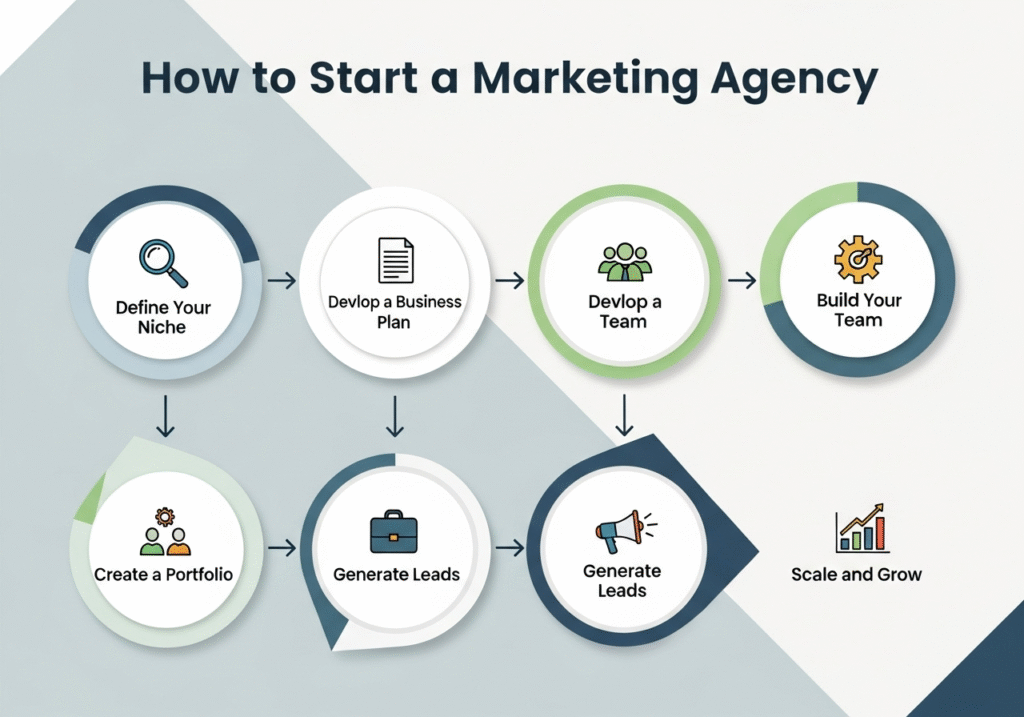Google’s algorithm updates keep getting smarter, and the old SEO playbook just won’t cut it anymore. If you’re a digital marketer, content creator, or business owner who wants to stay ahead of the competition, you need cutting-edge white-hat SEO advice that actually works in today’s search landscape.
This guide is packed with ethical SEO strategies that help you climb Google rankings without risking penalties or shortcuts that backfire later. You’ll discover how to build real authority that search engines trust and users love.
We’ll dive into AI-powered content optimization techniques that give you maximum search visibility while keeping your content genuinely helpful. You’ll also learn how to build unshakeable E-A-T authority through strategic content planning that positions you as the go-to expert in your field. Plus, we’ll explore the latest technical SEO innovations that can give you a serious edge over competitors who are still stuck using outdated methods.
Ready to transform your organic SEO results? Let’s get started with the strategies that top-ranking sites are using right now.
Master AI-Powered Content Optimization for Maximum Search Visibility

Leverage Natural Language Processing to Match User Intent
Google’s algorithms have become incredibly sophisticated at understanding what people actually want when they search. Instead of just matching keywords, the search engine now decodes the intent behind queries using natural language processing. This means your white-hat SEO strategy needs to think like your audience thinks.
Start by analyzing your search console data to identify patterns in how people phrase their queries. Look for question-based searches, comparison queries, and problem-solving phrases. When someone types “best coffee maker under $100,” they’re not just looking for product specs – they want recommendations, comparisons, and buying guidance.
Create content that directly addresses these intentions. If users search for “how to fix WordPress errors,” don’t just list technical solutions. Walk them through the process like you’re helping a friend troubleshoot their website. This approach aligns perfectly with ethical SEO strategies that prioritize user value over keyword stuffing.
Modern SEO best practices require understanding query modifiers too. Words like “best,” “how to,” “vs,” and “review” signal specific intent types. Map your content to match these patterns naturally.
Implement Semantic Keyword Research Beyond Traditional Methods
Traditional keyword research tools only scratch the surface. Semantic keyword research digs deeper into the relationships between concepts, helping you capture traffic from related terms you might never have considered.
Use tools like AnswerThePublic, AlsoAsked, and Google’s “People Also Ask” sections to uncover semantic variations. When researching “content marketing,” you’ll discover related concepts like audience engagement, brand storytelling, and customer journey mapping.
Create topic maps that connect your primary keywords to related concepts. This approach helps search engines understand your content’s context and relevance. For example, a post about “organic SEO” might naturally incorporate terms like user experience, page load speed, and mobile optimization.
| Traditional Keywords | Semantic Variations | Intent Match |
|---|---|---|
| SEO tips | Search optimization advice, ranking strategies | Learning/Implementation |
| Link building | Backlink acquisition, authority building | Technical knowledge |
| Google ranking | SERP positioning, visibility improvement | Performance tracking |
Create Content Clusters That Satisfy Algorithm Preferences
Content clusters have revolutionized how search engines understand website authority and topic expertise. Instead of creating standalone articles, build interconnected content ecosystems around core topics.
Start with a comprehensive pillar page covering your main topic broadly. Then create supporting cluster content that dives deep into specific subtopics. Each cluster page should link back to the pillar page and to related cluster content.
For cutting-edge white-hat SEO advice, your pillar page might cover “Complete SEO Strategy Guide,” while cluster pages explore specific tactics like technical audits, content optimization, and performance monitoring. This structure signals to Google that you’re a comprehensive resource on the topic.
Internal linking becomes crucial here. Use descriptive anchor text that includes semantic variations of your target keywords. Don’t just link with “click here” – use phrases like “advanced technical SEO techniques” or “proven link building strategies.”
Track how users move through your content clusters using Google Analytics. High engagement across multiple related pages signals topic authority to search engines.
Optimize for Featured Snippets and Voice Search Queries
Featured snippets represent the holy grail of search engine optimization – position zero visibility that captures attention before traditional organic results. Voice search queries, which often trigger featured snippets, are growing rapidly as smart speakers and mobile assistants become ubiquitous.
Structure your content to directly answer common questions. Use clear headings that mirror how people speak their queries. Instead of “SEO Methodology,” try “How to Improve Your Website’s Search Rankings.”
Format answers in snippet-friendly structures:
- Lists for step-by-step processes
- Tables for comparisons and data
- Short paragraphs (40-60 words) for definition-style snippets
- FAQ sections for question-based queries
Voice search queries tend to be longer and more conversational. People ask their devices complete questions rather than typing fragmented keywords. Optimize for phrases like “What are the best white-hat SEO strategies for small businesses?” rather than just “white-hat SEO.”
Create content that answers the follow-up questions users might ask after getting their initial answer. This comprehensive approach increases your chances of capturing multiple related snippets and voice search results.
Build Unshakeable E-A-T Authority Through Strategic Content

Establish Author Credentials and Expertise Signals
Google’s algorithm gets smarter every day at identifying genuine expertise, and building credible author profiles has become non-negotiable for organic SEO success. The search giant wants to see real people with real credentials backing the content you publish.
Start by creating comprehensive author bio pages that showcase educational backgrounds, professional certifications, and industry experience. Include specific achievements like speaking engagements, published research, or awards that directly relate to your content topics. Link these author pages from every piece of content, and make sure the bylines connect to detailed LinkedIn profiles and professional websites.
Schema markup plays a crucial role here. Implement Person schema on author pages and use the “author” property in your content schema to create clear connections between writers and their work. This helps search engines understand who created your content and why they’re qualified to discuss the topic.
Don’t overlook the power of consistent brand mentions across the web. Encourage authors to guest post on reputable industry publications, participate in podcasts, and speak at conferences. Each mention reinforces their expertise and builds the authority signals Google looks for when evaluating content quality.
Secure High-Quality Backlinks from Industry Leaders
The backlink landscape has evolved far beyond simple link exchanges and directory submissions. Today’s white-hat SEO strategies focus on earning links through genuine relationship building and value creation.
Target industry publications, thought leaders, and authoritative websites that align with your niche. Research their content gaps and pitch unique angles or data-driven insights they haven’t covered. Original research studies, industry surveys, and comprehensive guides tend to attract the most valuable links from respected sources.
Build relationships with journalists and content creators through social media engagement and thoughtful commentary on their work. Tools like HARO (Help a Reporter Out) connect you with writers seeking expert sources, creating natural opportunities for quality backlinks while establishing your brand as an industry authority.
Focus on earning links from websites with strong domain authority and topical relevance. A single link from a respected industry publication carries more weight than dozens of links from low-quality directories. Track your progress using tools that monitor both the quantity and quality of your backlink profile.
Create Comprehensive Resource Pages That Attract Natural Links
Resource pages act as magnets for organic backlinks when designed strategically. These comprehensive guides become go-to references that other websites naturally want to link to and share with their audiences.
Develop ultimate guides that cover topics exhaustively, including original research, expert interviews, and actionable insights you can’t find elsewhere. Structure these pages with clear headings, visual elements like infographics and charts, and downloadable resources that add extra value for visitors.
Update resource pages regularly to maintain their relevance and accuracy. Fresh statistics, new case studies, and emerging trends keep these pages valuable over time. Search engines reward regularly updated comprehensive content with better rankings, and other websites prefer linking to current information.
Create topic clusters around your resource pages by developing supporting content that links back to these cornerstone pieces. This internal linking strategy reinforces the authority of your main resource while helping search engines understand your content hierarchy and expertise areas.
Technical SEO Innovations That Dominate Search Results

Implement Advanced Core Web Vitals Optimization
Core Web Vitals have evolved beyond basic metrics into sophisticated ranking signals that separate top performers from the competition. Smart SEO professionals focus on three critical areas: Largest Contentful Paint (LCP), First Input Delay (FID), and Cumulative Layout Shift (CLS).
LCP Optimization Strategies:
- Preload critical resources using
<link rel="preload">for hero images and fonts - Implement resource hints like
dns-prefetchandpreconnectfor external domains - Use modern image formats (WebP, AVIF) with responsive sizing
- Optimize server response times through CDN implementation and efficient caching
FID and Interaction Improvements:
- Break up long JavaScript tasks using
setTimeout()orscheduler.postTask() - Defer non-critical JavaScript until after page load
- Minimize third-party script impact through async loading
- Use web workers for heavy computational tasks
CLS Prevention Techniques:
- Define explicit dimensions for images, videos, and ads
- Reserve space for dynamic content with CSS aspect ratios
- Avoid inserting content above existing elements
- Use transform animations instead of changing layout properties
Real-world testing shows sites achieving Core Web Vitals scores above 90% see ranking improvements within 4-6 weeks. This cutting-edge white-hat SEO advice focuses on user experience metrics that directly correlate with search performance.
Master Schema Markup for Enhanced Rich Snippets
Schema markup transforms ordinary search listings into eye-catching rich snippets that dominate click-through rates. Advanced implementation goes beyond basic organization data to create comprehensive structured data ecosystems.
High-Impact Schema Types:
- Product schema with detailed pricing, availability, and review data
- FAQ schema for question-rich content that captures featured snippets
- How-to schema for step-by-step guides with rich visual elements
- Event schema for time-sensitive content and local SEO
Advanced Implementation Techniques:
- Nested schema relationships for complex content hierarchies
- JSON-LD implementation over microdata for cleaner code
- Dynamic schema generation for e-commerce and user-generated content
- Schema validation using Google’s Rich Results Test
Performance Monitoring:
Create tracking systems to measure rich snippet performance:
| Schema Type | CTR Improvement | Implementation Complexity |
|---|---|---|
| Product | 25-40% | Medium |
| FAQ | 30-50% | Low |
| Recipe | 35-45% | Medium |
| Local Business | 20-35% | High |
Regular schema audits ensure markup stays current with Google’s evolving rich snippet requirements. Sites with comprehensive schema implementation report 20-35% higher organic click-through rates compared to competitors.
Optimize for Mobile-First Indexing and User Experience
Mobile-first indexing means Google primarily uses mobile content for ranking and indexing. This shift demands a complete rethinking of how we approach technical optimization and user experience design.
Mobile Performance Priorities:
- Achieve loading speeds under 3 seconds on 3G connections
- Implement touch-friendly navigation with 44px minimum touch targets
- Use viewport meta tags correctly for proper mobile rendering
- Optimize font sizes for mobile readability (minimum 16px)
Advanced Mobile Techniques:
- Implement Accelerated Mobile Pages (AMP) for news and blog content
- Use responsive images with srcset for optimal loading across devices
- Deploy service workers for offline functionality and faster repeat visits
- Optimize above-the-fold content for immediate mobile visibility
User Experience Factors:
Mobile users expect instant gratification. Focus on:
- One-thumb navigation patterns
- Simplified forms with autofill capabilities
- Fast checkout processes for e-commerce
- Readable content without horizontal scrolling
Testing and Validation:
- Use Google’s Mobile-Friendly Test regularly
- Monitor Core Web Vitals specifically on mobile devices
- Test across different device types and screen sizes
- Analyze mobile user behavior through heatmap tools
Sites optimizing for mobile-first indexing see average ranking improvements of 15-25% within three months of implementation.
Leverage Progressive Web App Features for Better Rankings
Progressive Web Apps (PWAs) represent the future of web development, combining the best of web and mobile app experiences. Search engines increasingly favor sites with PWA features because they deliver superior user experiences.
Core PWA Components:
- Service workers for offline functionality and faster loading
- Web app manifests for app-like installation capabilities
- HTTPS implementation across all pages
- Responsive design that works across all devices
SEO Benefits of PWA Features:
- Improved page load speeds through aggressive caching
- Better user engagement metrics from app-like experiences
- Enhanced mobile performance scores
- Increased time on site and reduced bounce rates
Implementation Strategy:
Start with essential PWA features:
- Service Worker Setup:
- Cache critical resources for offline access
- Implement background sync for form submissions
- Enable push notifications for user re-engagement
- App Manifest Configuration:
- Create app icons for various screen sizes
- Set display modes for immersive experiences
- Define theme colors for brand consistency
- Performance Optimization:
- Use cache-first strategies for static assets
- Implement network-first for dynamic content
- Enable lazy loading for images and videos
Advanced PWA Features:
- Background sync for offline form submissions
- Push notifications for user retention
- App shell architecture for instant loading
- Integration with device features (camera, GPS)
Early adopters of PWA technology report 40-60% improvements in user engagement metrics and corresponding ranking benefits. These white-hat SEO strategies position sites for long-term success as web standards continue evolving toward app-like experiences.
Harness User Behavior Signals to Skyrocket Rankings

Increase Dwell Time Through Interactive Content Elements
Dwell time has become one of the most powerful ranking signals in modern SEO, and smart marketers are capitalizing on this by creating content that keeps visitors glued to their pages. The secret lies in transforming static content into engaging, interactive experiences that naturally encourage users to spend more time exploring your site.
Interactive calculators, quizzes, and polls work like magnets for user attention. A mortgage calculator on a real estate blog or a calorie counter on a fitness site doesn’t just provide value – it creates a mini-experience that users want to complete. These tools typically increase dwell time by 3-5 minutes per session, sending strong positive signals to search engines about your content quality.
Video content embedded strategically throughout your articles creates natural pause points where users engage differently with your material. Short explainer videos, behind-the-scenes clips, or step-by-step tutorials break up text walls while providing additional value. The key is making videos that complement rather than repeat your written content.
Expandable sections and tabbed content allow users to dive deeper into topics that interest them most. This approach works particularly well for comprehensive guides where different user segments need different information depths. A beginner might explore basic tabs while an expert digs into advanced sections – both stay longer and engage more thoroughly.
Interactive infographics and clickable elements transform passive reading into active exploration. Users hover, click, and discover additional layers of information, creating a more immersive experience that naturally extends session duration.
Reduce Bounce Rates with Strategic Internal Linking
Bounce rate optimization through internal linking represents one of the most underutilized white-hat SEO strategies available today. The art lies not just in adding links, but in creating logical pathways that guide users naturally through your content ecosystem.
Contextual linking within the first 100 words of your content dramatically impacts bounce rates. When users see relevant links early in their reading experience, they’re more likely to explore additional pages before leaving. This early engagement creates a browsing momentum that carries throughout their session.
Topic clusters and pillar page strategies work exceptionally well for bounce rate reduction. Create comprehensive cornerstone content that links to specific, related articles. For example, a complete guide to content marketing might link to specialized articles about email marketing, social media strategies, and SEO best practices. This hub-and-spoke model keeps users within your domain longer.
Related post widgets and “you might also like” sections should appear strategically – not just at the end of articles. Mid-content suggestions, particularly after major sections or key points, catch users when their interest peaks rather than when they’re already reaching for the back button.
Smart internal linking also considers user intent matching. Link building articles should connect to other link building resources, not randomly to unrelated topics. This relevance keeps users engaged and reduces the likelihood they’ll abandon your site for competitor content.
Boost Click-Through Rates with Compelling Meta Descriptions
Meta descriptions serve as your search result sales pitch, and crafting compelling ones can dramatically improve your organic SEO performance. The most effective descriptions balance keyword inclusion with genuine user appeal, creating irresistible previews of your content value.
Emotional triggers in meta descriptions significantly outperform purely informational ones. Words like “discover,” “unlock,” “proven,” and “secret” create curiosity that drives clicks. However, the key is backing up these promises with substantial content that delivers on the expectation you’ve created.
Question-based meta descriptions tap into user psychology by directly addressing their search intent. “Struggling with low website traffic?” immediately resonates with users facing that specific problem. This approach works particularly well for how-to content and problem-solving articles.
Numbers and specifics in descriptions provide concrete value propositions that stand out in search results. “7 proven strategies” or “increase traffic by 150%” gives users clear expectations about what they’ll gain from clicking through to your content.
Power words and action verbs create urgency and momentum in your descriptions. Instead of “This article discusses SEO strategies,” try “Master these cutting-edge SEO strategies to dominate search rankings.” The active voice and strong verbs make your content feel more valuable and actionable.
Testing different description approaches for similar content reveals what resonates with your specific audience. Some niches respond better to benefit-focused descriptions, while others prefer feature-heavy or problem-solution formats. Regular optimization of your meta descriptions based on click-through rate data becomes a powerful component of your overall SEO best practices strategy.
Scale Your SEO Impact with Automation and Data-Driven Strategies

Automate Technical Audits for Consistent Performance
Manual technical SEO audits are time-consuming and prone to human error. Smart automation tools now handle these tasks with precision, scanning your site continuously for issues that could tank your rankings. Set up automated crawling schedules that check for broken links, duplicate content, page speed problems, and mobile usability issues.
Tools like Screaming Frog, DeepCrawl, and Sitebulb can run comprehensive site audits weekly, sending alerts when critical problems emerge. Configure these systems to monitor core web vitals, schema markup implementation, and crawl budget optimization automatically.
The real power comes from creating custom monitoring dashboards that track your site’s technical health over time. When Google rolls out algorithm updates, your automated systems catch performance drops immediately, allowing quick fixes before traffic suffers. This proactive approach keeps your white-hat SEO strategies running smoothly without constant manual intervention.
Use Analytics to Identify High-Impact Optimization Opportunities
Raw data means nothing without smart analysis. Modern SEO requires digging deep into user behavior patterns, search performance metrics, and conversion data to spot golden optimization opportunities that competitors miss.
Start with Google Search Console data to identify pages ranking between positions 4-10 for valuable keywords. These pages sit on the edge of first-page visibility and often need minor tweaks to jump into top positions. Cross-reference this data with Google Analytics to find pages with high impressions but low click-through rates – prime candidates for title tag and meta description optimization.
Heat mapping tools like Hotjar reveal how users interact with your content, showing which sections get ignored and which drive engagement. Combine this behavioral data with keyword research to identify content gaps and expansion opportunities.
| Metric | Optimization Action |
|---|---|
| High bounce rate + short dwell time | Improve content quality and user experience |
| Low CTR in search results | Optimize title tags and meta descriptions |
| High impressions, low clicks | Review featured snippets and SERP competition |
| Good traffic, poor conversions | Enhance call-to-action placement and content relevance |
Implement Predictive SEO Based on Search Trend Analysis
Staying ahead means predicting what users will search for before they know it themselves. Seasonal trends, emerging topics, and shifting search behaviors create opportunities for forward-thinking content creators.
Google Trends, combined with social media listening tools, reveals rising search queries months before they peak. Create content calendars around these predictions, building authority on topics while competition remains low. Answer The Public and AlsoAsked help identify question-based queries that will gain traction.
AI tools now analyze search patterns across millions of queries, identifying micro-trends within your niche. Use these insights to develop content themes that align with future user intent, positioning your site as the go-to resource when search volume explodes.
Monitor your competitors’ content gaps using tools like SEMrush Content Gap analysis. When you spot trending topics they haven’t covered, jump on those opportunities with comprehensive, authoritative content that captures early search traffic.
Create Systematic Workflows for Content Publishing and Promotion
Consistency beats sporadic excellence in SEO. Building systematic workflows ensures every piece of content gets proper optimization, internal linking, and promotional support without overwhelming your team.
Design content templates that include SEO checklists: keyword integration, meta tags, internal links, image optimization, and schema markup. Create approval workflows that verify each element before publication, maintaining quality standards across all content.
Your promotion workflow should activate immediately after publishing. Automated social media scheduling, email newsletter integration, and internal linking updates should happen without manual intervention. Build relationships with industry publications and influencers through systematic outreach campaigns that amplify your best content.
Track performance metrics for each step in your workflow, identifying bottlenecks and optimization opportunities. Maybe your content performs better when published on Tuesdays, or perhaps certain promotion channels drive more qualified traffic. Data-driven workflow refinement turns good processes into great ones that consistently boost organic rankings through ethical SEO strategies.

SEO success in 2025 comes down to mastering five game-changing strategies that work together like pieces of a puzzle. AI-powered content optimization helps you create exactly what search engines and users want to see, while building rock-solid E-A-T authority sets you apart from competitors who cut corners. Don’t sleep on technical innovations and user behavior signals either – these behind-the-scenes factors can make or break your search visibility.
The brands that win big this year will be the ones who embrace automation and let data guide their decisions instead of guessing what works. Start with one area that feels most natural to your business, then gradually layer in the other strategies as you build momentum. Your future self will thank you for investing in these white-hat approaches that create lasting results rather than quick fixes that crumble when algorithms change.
FAQs
What is white-hat SEO?
White-hat SEO refers to ethical optimization techniques that follow Google’s guidelines, focusing on creating valuable content and improving user experience for long-term success.
Why is white-hat SEO important?
White-hat SEO builds lasting credibility, reduces penalty risks, and ensures consistent ranking growth through genuine, user-focused optimization.
What are examples of white-hat SEO techniques?
Examples include high-quality content creation, link building through outreach, keyword optimization, mobile-friendly design, and improving website speed.
How does white-hat SEO differ from black-hat SEO?
White-hat SEO follows search engine rules and prioritizes users, while black-hat SEO manipulates algorithms for quick but risky results that can lead to penalties.
What are the best white-hat link-building methods?
Guest posting, HARO backlinks, broken link building, digital PR, and creating link-worthy resources are effective white-hat link-building methods.
Can white-hat SEO deliver fast results?
White-hat SEO focuses on sustainable growth. While results may take longer, they are stable, long-lasting, and risk-free compared to shortcut methods.
How can I ensure my SEO agency uses white-hat methods?
Ask about their backlink sources, content creation process, and compliance with Google’s Webmaster Guidelines before hiring.
Does white-hat SEO still work in 2025?
Yes. With Google’s evolving algorithms, white-hat SEO is more important than ever for building trust, authority, and consistent organic performance.
What role does content quality play in white-hat SEO?
High-quality, original, and helpful content is the foundation of white-hat SEO, helping attract natural backlinks and improve user satisfaction.
Can I mix white-hat and black-hat SEO strategies?
Mixing them is risky. Sticking to pure white-hat SEO ensures long-term results and prevents ranking drops or Google penalties.



